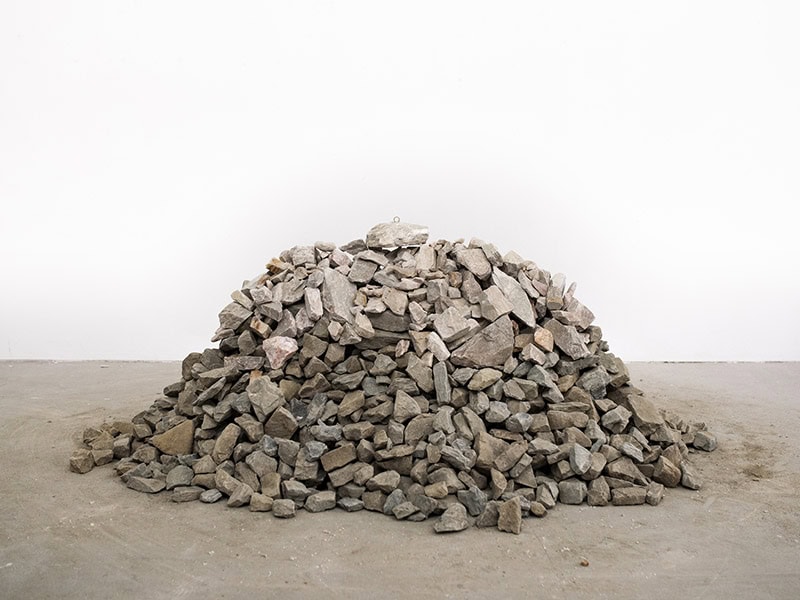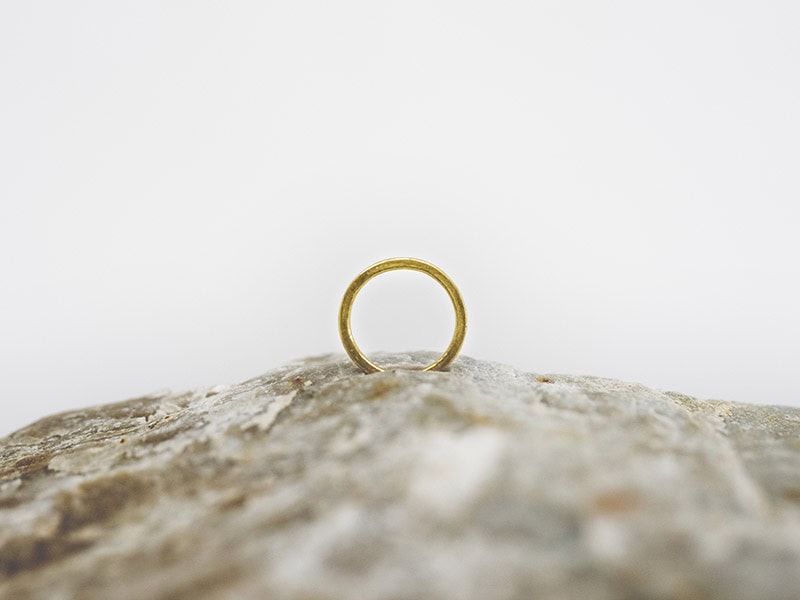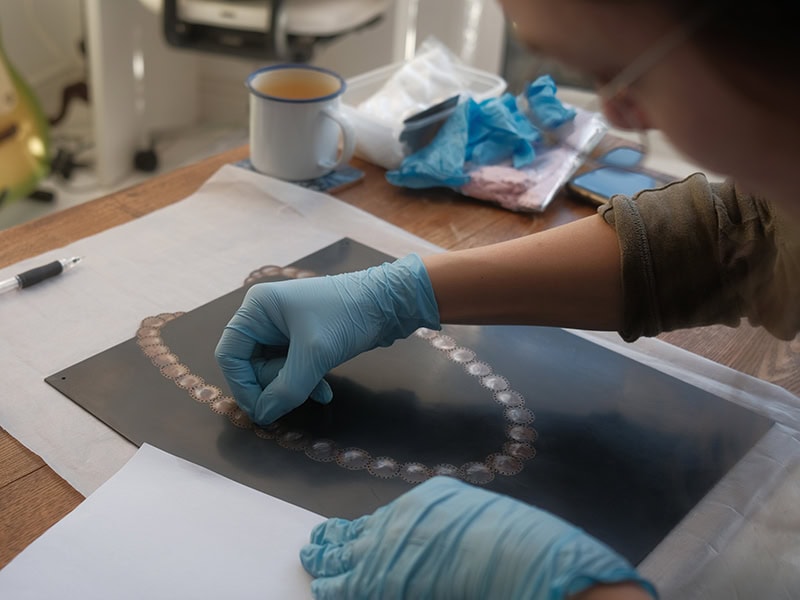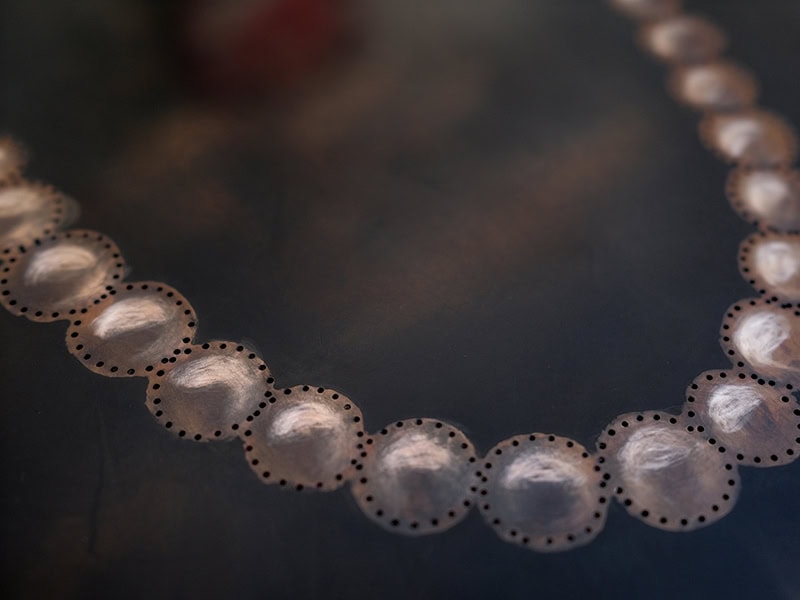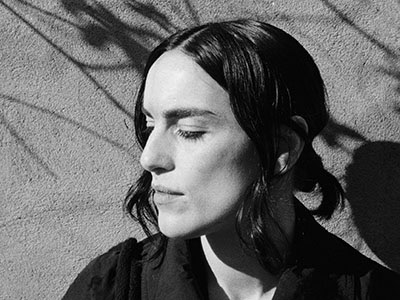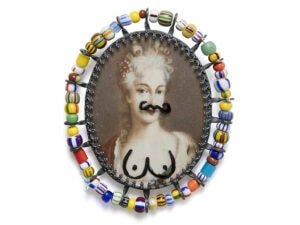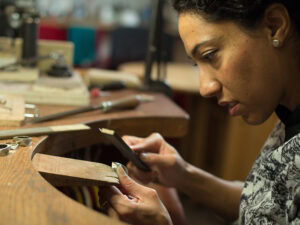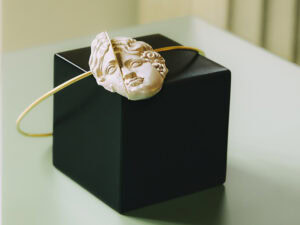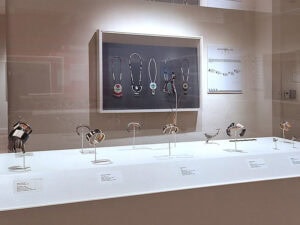Katharina Dettar’s work challenges traditional notions of jewelry and objects through an awareness of material origins and an exploration of sustainability, waste, and nature. Her pieces are exhibited in galleries worldwide, and she lectures at several universities in London.
I arrive at Dettar’s studio, a former parking garage converted into artists units in Hoxton, London. She shares the space with silversmith Max Warren, who, like her, combines teaching with his practice. Inside, it’s centered around the practicalities of making—tools are neatly arranged on workbenches and a large window lets in the last of the day’s light.
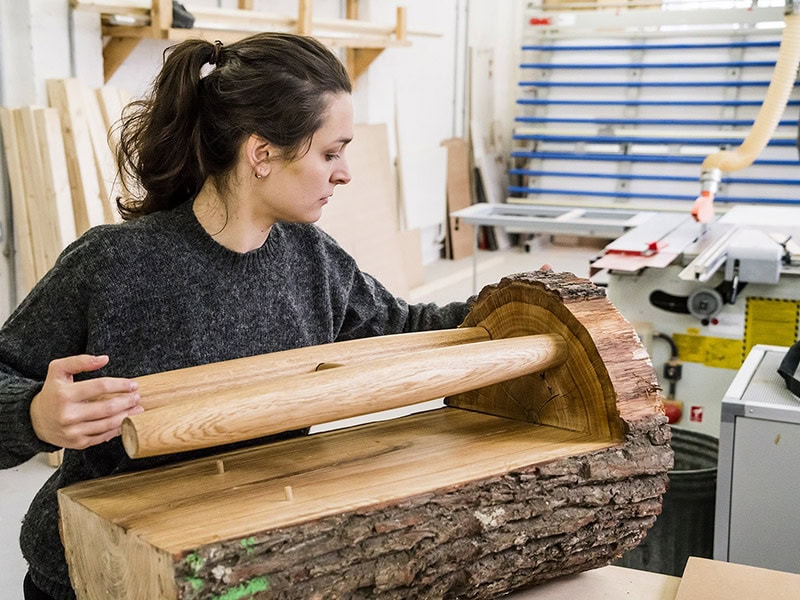
Zoe Clark: Please introduce your practice.
Katharina Dettar: Well, I make things. I say things because my outcomes can vary—from jewelry and objects to installations, all depending on the ideas I’m exploring. But I’ve always been drawn to natural materials. I see teaching and sharing as a part of my practice. It’s a continuous link, not something separate. I’ve been doing this for 10 years now in various roles: workshop leader for short-term projects, visiting lecturer at the University of Hertfordshire, guest lecturer at the Royal College of Art, and senior lecturer and year-1 leader at Central Saint Martins.
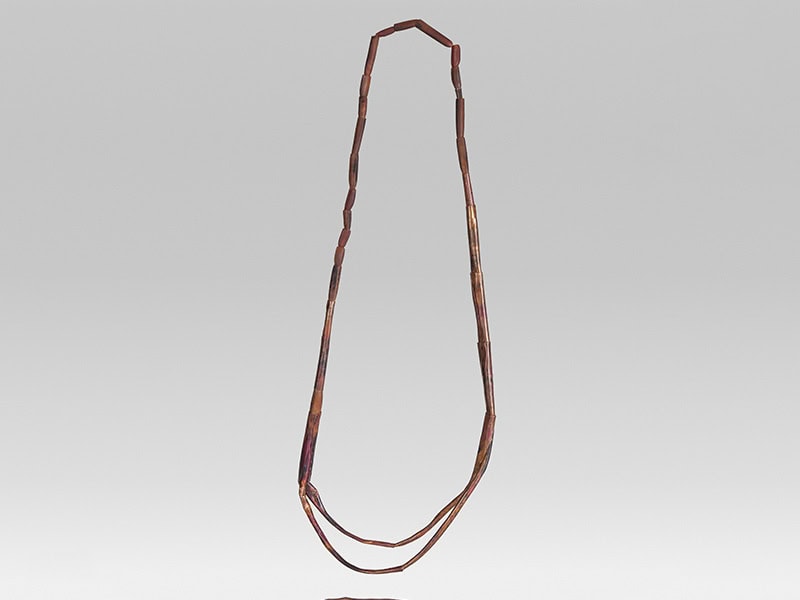
What first drew you to jewelry?
Katharina Dettar: I grew up helping in my grandparents’ workshop. They built displays for the watch and jewelry industry since Franco’s regime, when importing goods into Spain wasn’t easy. There, my brother, cousins, and I learned to work with materials—I guess that shaped my sense of working hard and together. Creativity was encouraged by my parents. Art was seen as as important as other subjects. But I never aimed to become a jeweler. It came when I was choosing what to study. I wanted to work with my hands, with materials, and was interested in something with a history, rooted in social and economic contexts—that’s jewelry.
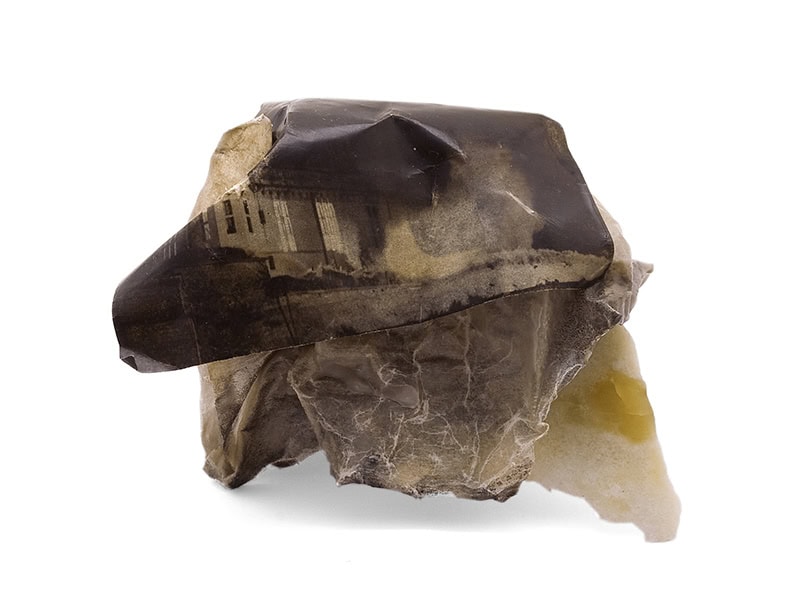
Where did you study?
Katharina Dettar: I first studied at Escola Massana and, during my final year, I went on exchange to Lappeenranta, in Finland. There, I worked with stone. The department was led by three strong women: Eija Mustonen, Tarja Tuupanen, and Helena Lehtinen. It was a transformative experience. After that, being half German and interested in stone, I pursued a BA in Idar-Oberstein. I then received a scholarship (Studienstiftung des Deutschen Volkes) for my MA and chose to study at the Royal College of Art, in London.
What key ideas drive your work?
Katharina Dettar: I guess one is inspired by the world that surrounds them and the times we live in. As I said, I’m fascinated by natural materials—their uniqueness and how they came to be. The stories materials carry … how they end up in a country, a shop, a workshop, in my hands. These themes may not always be visually present in my work, but unfairness, injustice, and disinformation often drive my focus. Sometimes narratives guide the material choice. Other times, being drawn to a material sparks a deeper exploration that evolves into a narrative.
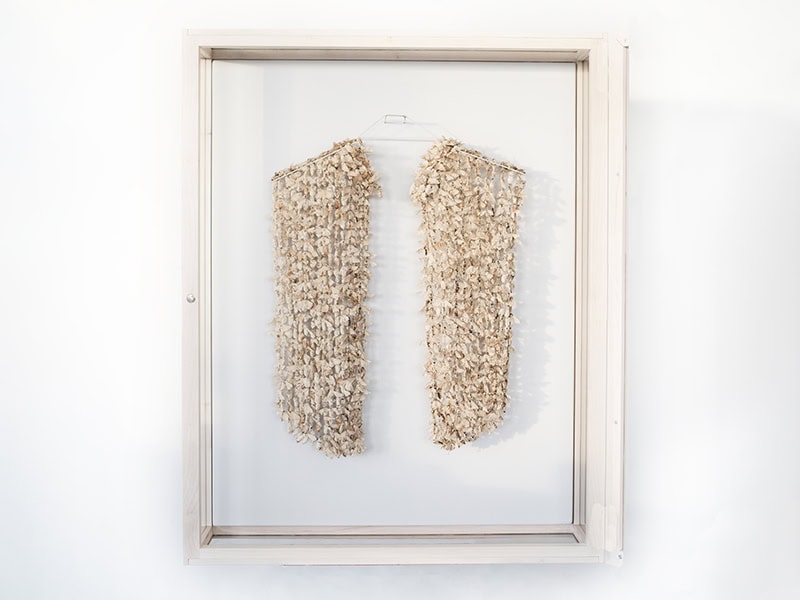
Works like 1000 Moths for a Blouse (in CODA Apeldoorn) and 1.540 = 0.0021kg (in Arnhem Museum) highlight the unseen energy and resources behind creating something small and widely consumed, like a gold ring. They speak to both imminence and permanence. Are these themes central in your work?
Katharina Dettar: That’s said in a beautiful way. Themes of the ephemeral and [of] permanence have been part of my practice since my first graduation project in 2009, where I worked with paper, photography, stone, pigment wax, and paraffin.
Your recent sheet metal “pearl” pieces seem to explore light and reflection. What inspired this?
Katharina Dettar: It’s about light, reflection, and pearls as a loaded symbolic material. The luster that carries value is actually layers of scarring. The industry mass-produces them, implanting, waiting, then ripping out the pearls—only some [oysters] survive extractions. All this brutality for something beautiful in the end. Along with beauty and brutality, my search was also for light—how it shines through the drilled holes of the piece, without needing a display or window light, whether in a home or gallery.
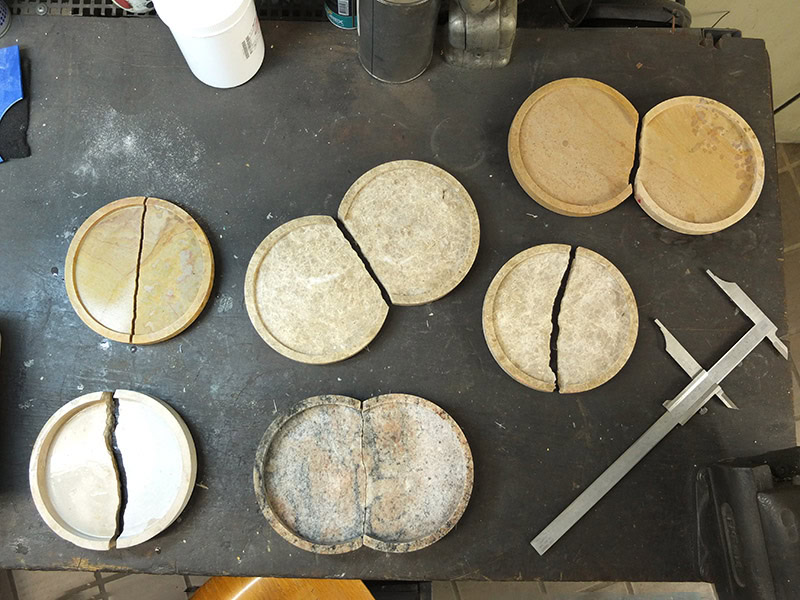
Your practice is interdisciplinary. What led you to explore multiple art forms? Do they influence one another?
Katharina Dettar: I have to thank Professor Lothar Brügel, who opened up a new world to me through his way of teaching and working. A weight lifted when I began sculpture lessons, [which are] part of the Idar-Oberstein curriculum. Suddenly, I had the freedom to work on a larger scale, free from the limitations of wearability. I work between disciplines because it gives space, allowing for a more genuine connection with the wearer or viewer.
Julia Wild once described my approach well: Jewelry tends to be more intimate; objects, more conceptual and cerebral. Sometimes, after creating something more removed, I feel the need to return to something emotional. It’s a kind of pendulum effect—each direction feeds the other. I’m lucky to be represented by Galerie Marzee, which champions all aspects of my practice.
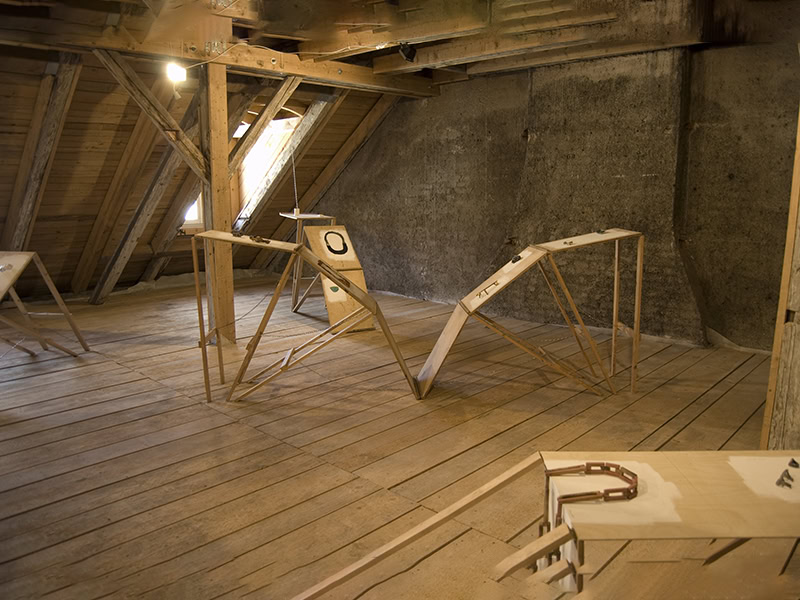
You’ve exhibited globally and worked in a gallery. Has that influenced how you present your pieces?
Katharina Dettar: Exhibiting work—mine and others’—has always genuinely interested me. My first show at Schmuck was in an unused attic, where a group of Idar-Oberstein students came together to exhibit. We borrowed easels and lights from school and built the exhibition ourselves. The feedback was positive. It taught me that you can create space and opportunity. Years later, I worked as gallery manager at Gallery SO while also teaching and leading workshops across London. Display is something I think about often. While it’s exciting to exhibit work in new, challenging ways, it should be integrated into the design and making process of a piece. For instance, my recent wall pieces are installed with just two silver nails, or my necklace has a well-integrated clasp.
Do you see galleries as an important platform?
Katharina Dettar: Galleries can be gatekeepers or eye-openers, depending on who they represent, how they select artists, and how they display work. They’re important within the art jewelry ecosystem, but not the only part of it. Ideally, the artist-gallery relationship is symbiotic. It’s interesting (and slightly scary) to see how things are shifting fast, with established galleries closing, fewer young collectors, and artists selling directly through social media or collective pop-ups.
Is there an exhibition that felt particularly significant to you?
Katharina Dettar: Talente 2010 was a significant learning curve. I graduated in early May from Escola Massana, and as I neared the final stages of my project, I was told to change it—it wasn’t considered jewelry. I didn’t, got a low grade, and was crushed. But a good friend insisted I apply to Talente. Some months later, I was selected—and I won. It was a powerful lesson; what one person sees a failure, another calls prize-winning. Take feedback, but stay true to your values. In the end, the work must stand for itself.
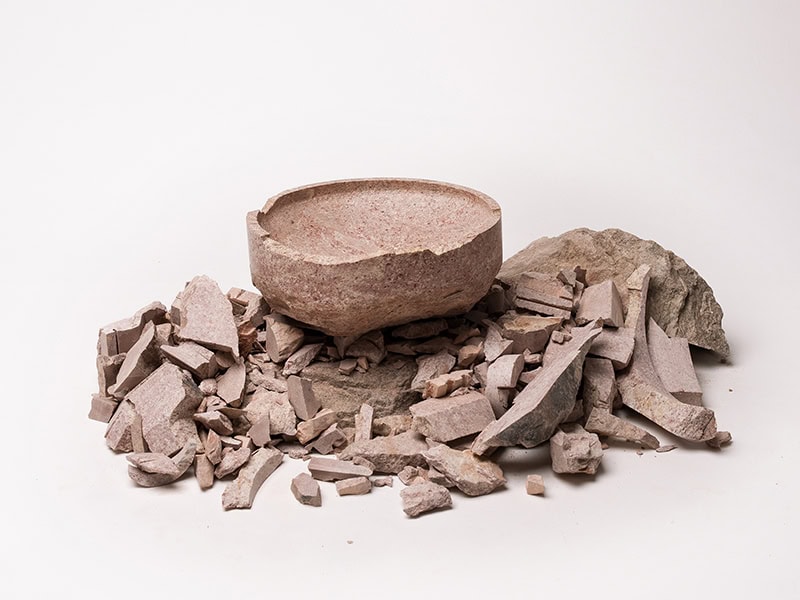
Could you describe your approach to teaching?
Katharina Dettar: As a teacher, you learn how to communicate with each student individually, watching their confidence grow as they absorb. I want my students to express their own voice, and I’m happy to play an integral part in that journey. I don’t expect them to mirror my style—everyone’s work will be different. My goal is to guide each student in discovering their own methods, helping them shape an artistic identity.
What one piece of advice would you give to young jewelry artists?
Katharina Dettar: Speak up, listen, and work with others. It’s not just about the individual, it’s about the group and the generation. Giving thanks and crediting others is important—the saying “it takes a village” resonates. I’m so lucky to have a journalist partner who refines my clunky texts, photographs many moments and my work. I have often relied on Adam Henderson’s skills to complete pieces, as well as many other friends and colleagues who support me and my practice.
What’s next?
Katharina Dettar: Currently I am focusing on creating a new body of work for a solo show in November, and I have been asked to curate an exhibition in 2026. [I’m] trying to keep it one big thing at a time. 🙂
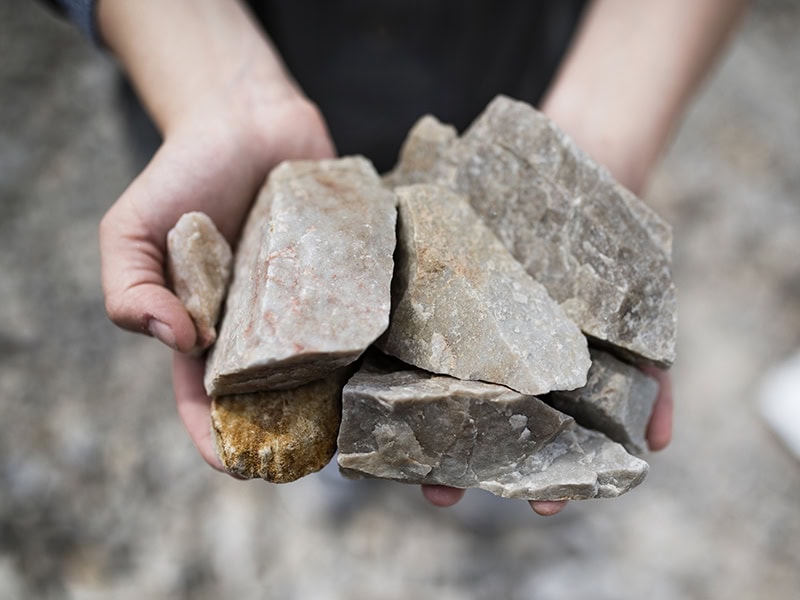
We welcome your comments on our publishing, and we will publish letters that engage with our articles in a thoughtful and polite manner. Please submit letters to the editor electronically; do so here. The page on which we publish Letters to the Editor is here.
© 2025 Art Jewelry Forum. All rights reserved. Content may not be reproduced in whole or in part without permission. For reprint permission, contact info (at) artjewelryforum (dot) org
